Distress of a Dictionary
2 October–2 November 2008
This small exhibition brings together ten works made over a period of forty years, all reflecting in some way Latham's use and misuse of language and humour
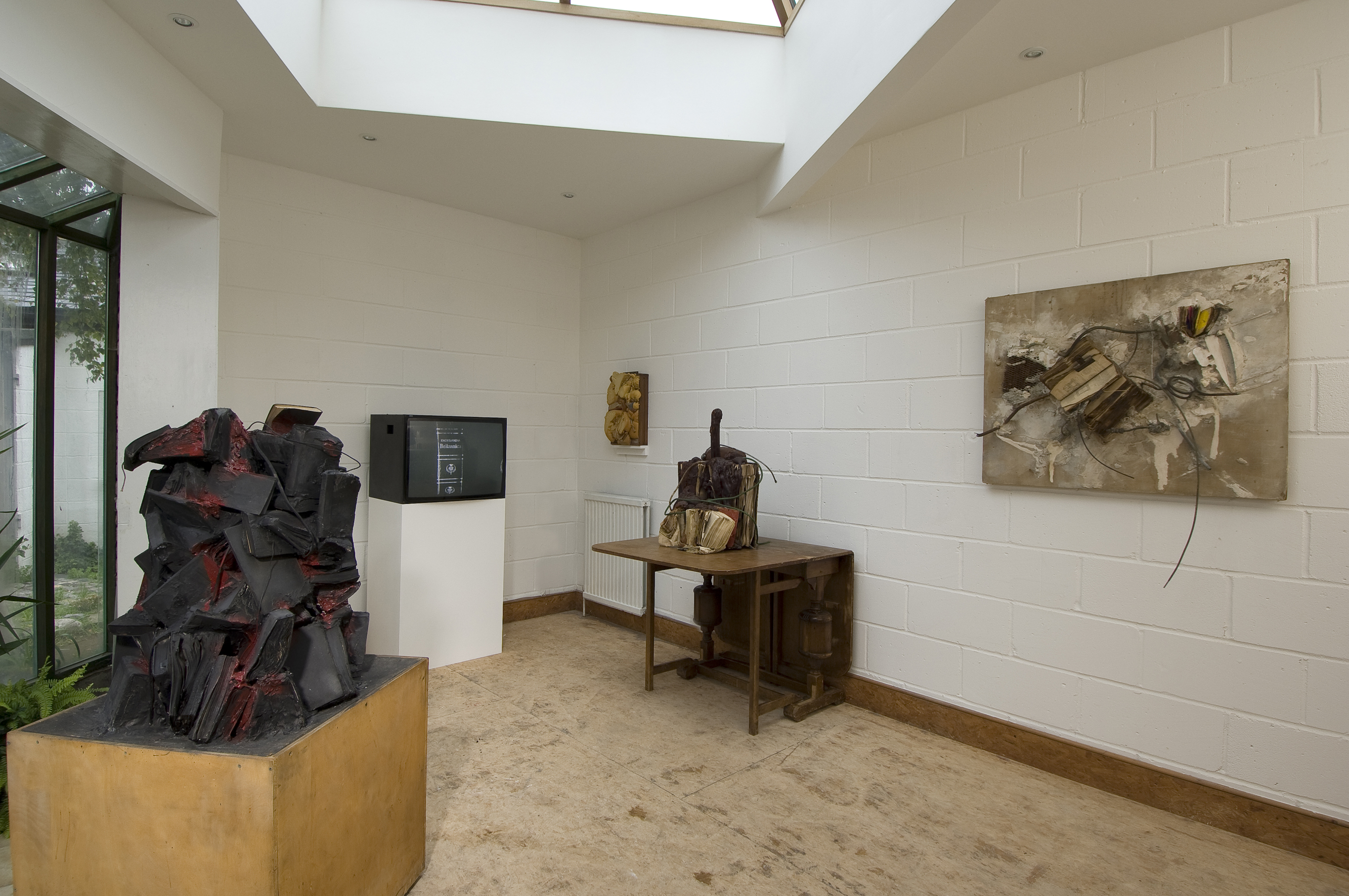
This work and the untitled work placed on the narrow set of bookshelves in this room, are products of a series of 'book plumbing' events which took place in the basement of Better Books on Charing Cross Road during April 1967, organised by Latham, Jeffrey Shaw, Jeffrey Sawtell and Paul Davies. The objects were created amid a frenetic environment of newspaper-covered, inflating and collapsing walls, books set in gelitin melting in the heat produced by a profusion of steam-making apparatus, a cyclist on a newspaper bicycle, performers pasted onto walls and hoisted into ceiling cocoons communicating through plastic tubing to a soundtrack of tapes by Bob Cobbing and Jandl. The idea of 'book plumbing' relates to the linear passing of knowledge from person to person and generation to generation. The later works Classical Painting (1988), and Tunnel Piece/PhD for Dogs (1998) also included in the exhibition, use similar materials and embody similar ideas.
This small exhibition brings together ten works made over a period of forty years, all reflecting in some way Latham's use and misuse of language and humour.
Books accumulate and coagulate. They are cut up and burnt. They are piled high and submerged. John Latham's relationship with books and the language they contain is described quite succinctly by his treatment of them. Although he began using books in his relief paintings as a purely formal element, as a required flat, solid form, they came to represent the accumulation of human knowledge and the duration of our human occupation of the planet. Although certain books, Holy books or books of the law, came to represent particular belief systems in Latham's work, he more frequently chose books for their aesthetic qualities, for their colour or size; their signification was more generic than specific.
In Latham's lexicon books are the apparatus of learnt knowledge and of received opinion. As such, they belong to the rational tradition and they stifle intuition. Reliance on the past to solve the new problems of the present and the future was flawed in Latham's view.
Books, as a vessel of language, act also as a metaphor for the use of language itself. Latham felt that the very structure and form of language, arranged around nouns and proper names, was suited to the space, or object-based tradition and was inadequate for describing the Time-Based nature of the universe. For a long time he attempted to convey his ideas through the non-verbal idiom and he developed a strong visual language that included the spray gun, canvas, glass, wires and pipes, as well as books. In this language, the event (of making) is integrated into the form that describes it.
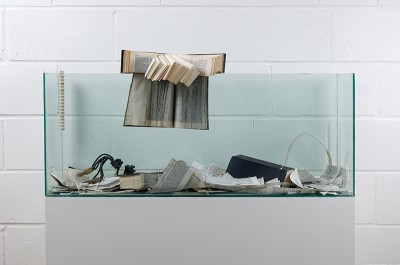
Distress of a Dictionary (1988) Glass fish-tank containing torn books, electrodes and cables. Photo: Ken Adlard
Distress of a Dictionary (1988): the show takes it's title from this first work, which you will see as you walk down the corridor from the Brain towards the Hand. In this work, the glass takes on an unusual role. In other works, like the book relief on the front of the house, the glass represents a zero point from which the books extrude, or emerge, representing human development over time, or the lifetime of the race. Here though, the glass encloses the Dictionary, which in its half-shredded state, is attempting to make its escape like the strange insect-like form in the far corner. This might be an allusion to the way in which knowledge is held captive and stifled by the static format of the printed page. Knowledge evolves and changes, words come in and out of parlance, theories are refuted and new discoveries are made, but this is not reflected in the rigid permanence of the book.
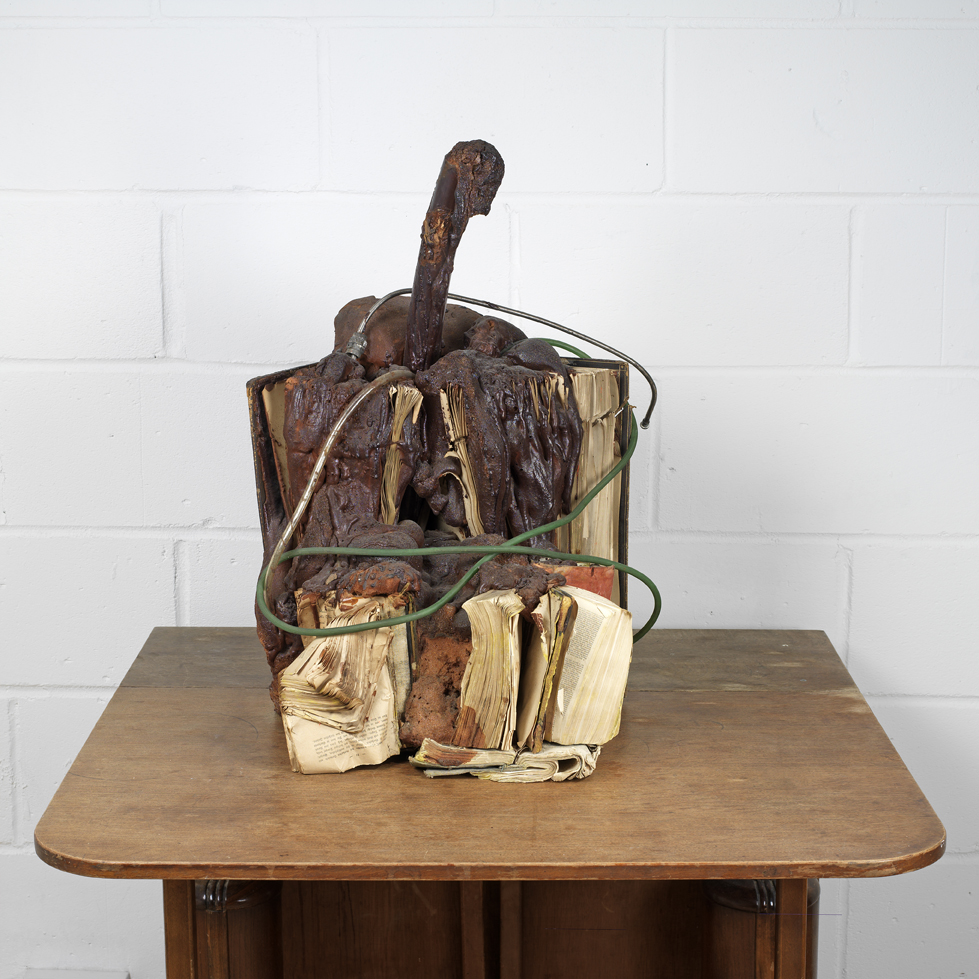
Firenze (1967) Polystyrene foam and books, plastic tubes, metal pipes.
Photo: Ken Adlard
This work and the untitled work placed on the narrow set of bookshelves in this room, are products of a series of 'book plumbing' events which took place in the basement of Better Books on Charing Cross Road during April 1967, organised by Latham, Jeffrey Shaw, Jeffrey Sawtell and Paul Davies. The objects were created amid a frenetic environment of newspaper-covered, inflating and collapsing walls, books set in gelitin melting in the heat produced by a profusion of steam-making apparatus, a cyclist on a newspaper bicycle, performers pasted onto walls and hoisted into ceiling cocoons communicating through plastic tubing to a soundtrack of tapes by Bob Cobbing and Jandl. The idea of 'book plumbing' relates to the linear passing of knowledge from person to person and generation to generation. The later works Classical Painting (1988) and Tunnel Piece/PhD for Dogs (1998) also included in the exhibition, use similar materials and embody similar ideas.
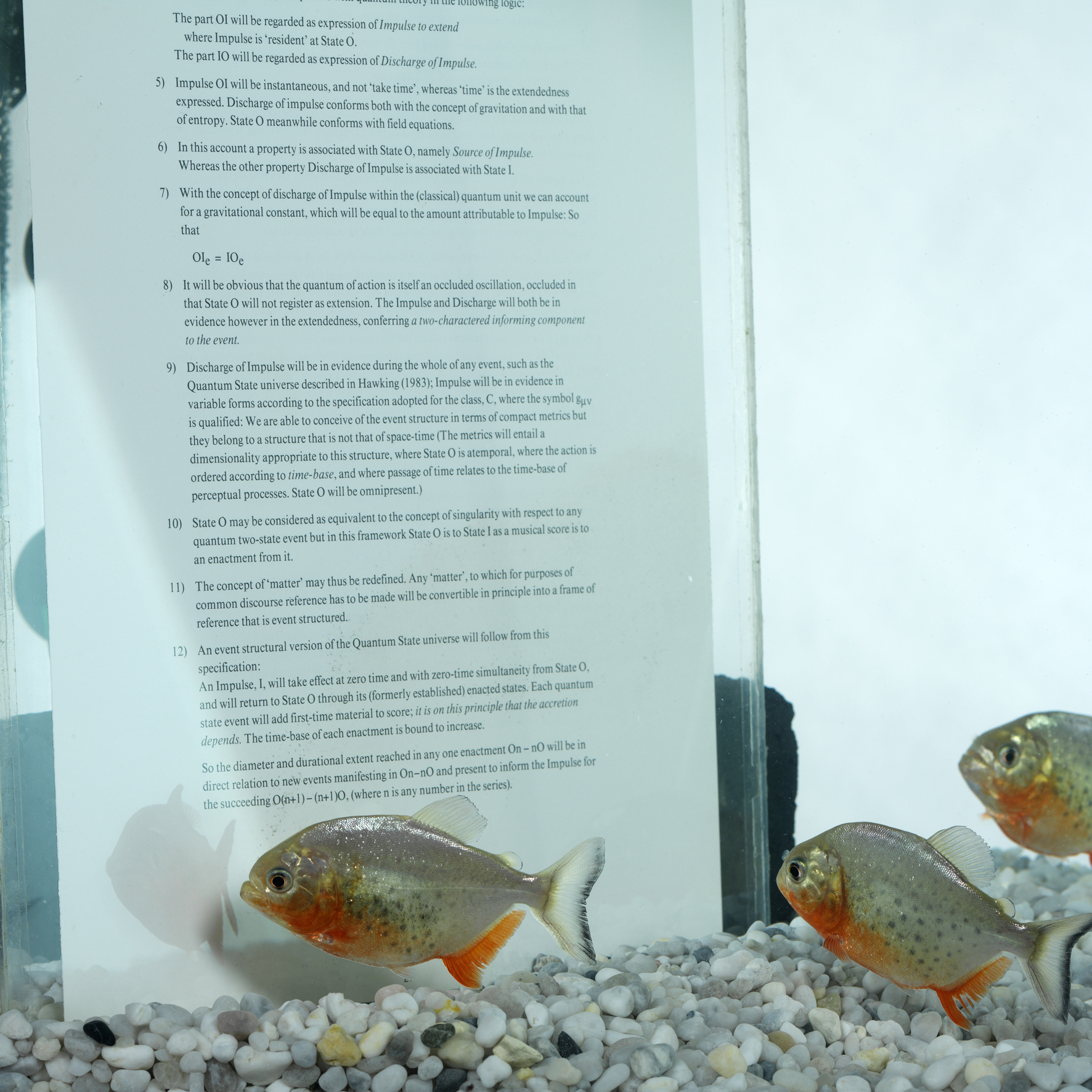
They're learning fast (1988) Fish-tank, pages from 'Report of a Surveyor', piranhas. Photo: Ken Adlard
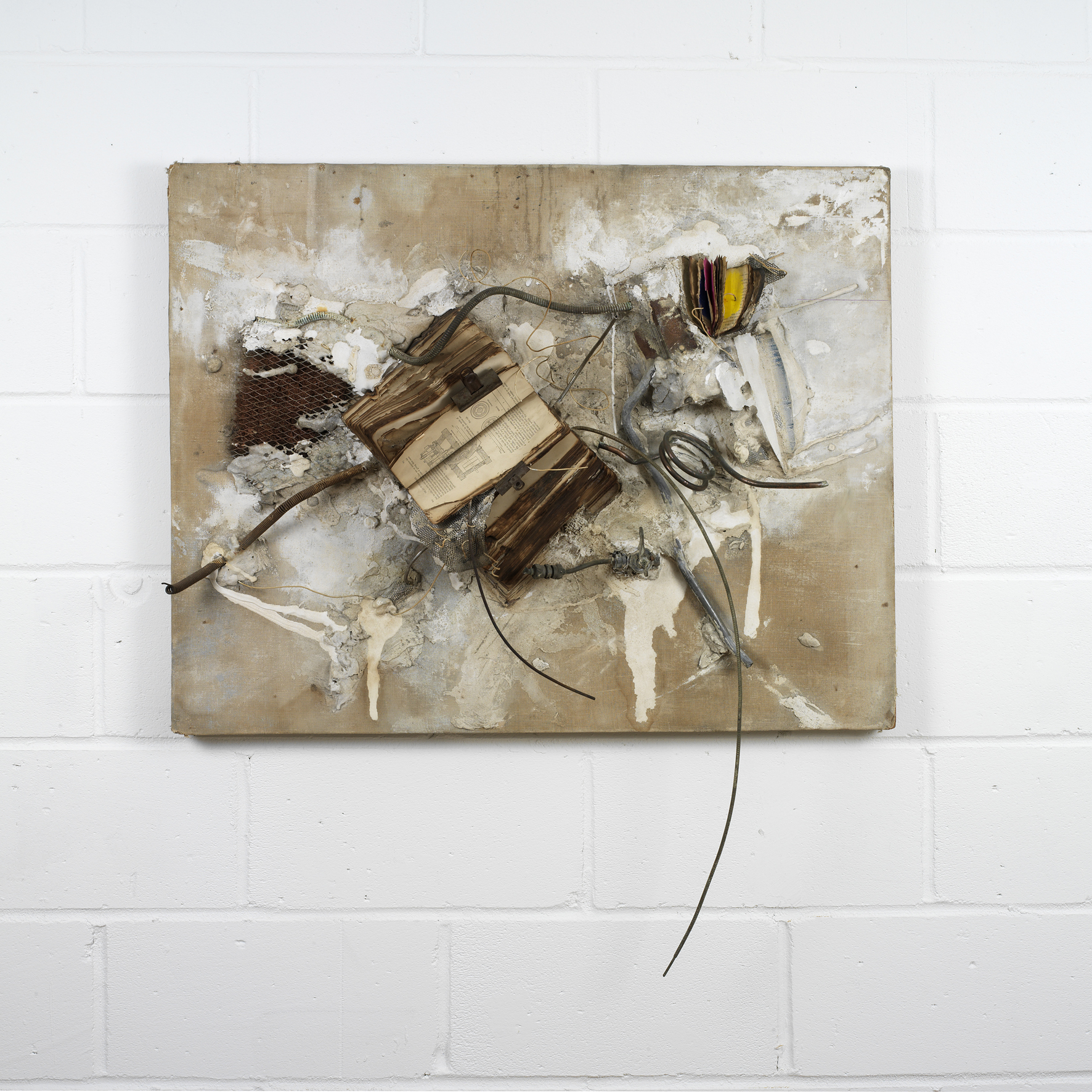
Philosophy and the practice of (1960) Singed and painted books, metal rust, clips, copper tubes, electrical wires, wire-mesh, electrical instrument panel, plaster on canvas and hardboard. Photo: Ken Adlard